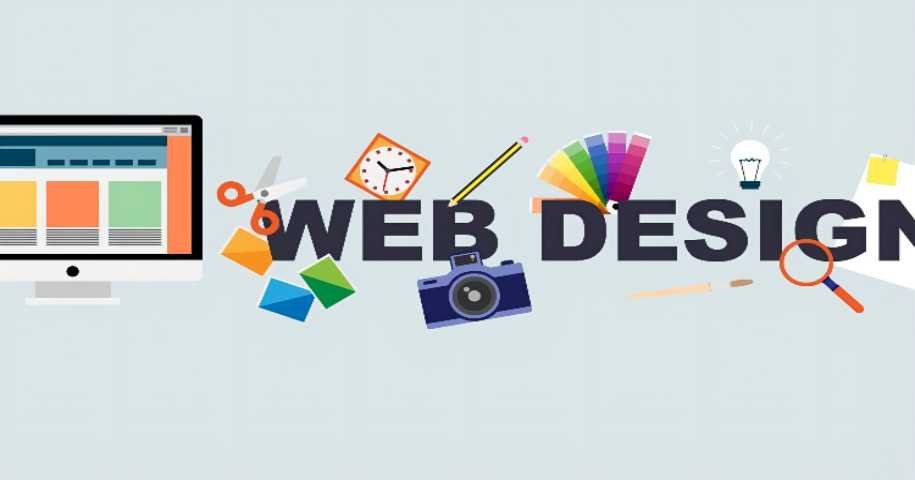Introduction:

In the vast arena of visual communication, the interplay of graphic design and web design stands as a dynamic force, shaping the way we perceive and interact with information in both traditional and digital spaces. While these terms are often used interchangeably, they represent distinct disciplines with unique characteristics, advantages, and disadvantages. This in-depth exploration seeks to unravel the intricate fabric of graphic design and web design, shedding light on their respective roles in our visual experiences.
Characteristics of Graphic Design:
Graphic design, as a versatile and foundational discipline, involves the creation of static visual elements for a myriad of mediums, from printed materials to digital platforms. The key characteristics of graphic design define its essence and set it apart in the realm of visual communication.
- Static Elements: Graphic design primarily deals with non-interactive visuals. Designers leverage principles of composition and layout to create aesthetically pleasing and impactful imagery.
- Print and Digital Harmony: Originally rooted in print media, graphic design seamlessly integrates into the digital realm. Graphic designers contribute to both traditional and online platforms, crafting visuals for social media, digital advertisements, and websites.
- Composition and Layout Mastery: Graphic designers excel in the art of composition and layout. Through a keen understanding of design principles, they arrange visual elements to achieve balance, contrast, and hierarchy.
- Typography Expertise: Typography is a core aspect of graphic design. Designers carefully select and arrange fonts to ensure readability and convey the desired tone and message.
- Brand Identity: Graphic designers play a crucial role in shaping and maintaining a brand’s identity. By creating logos, color schemes, and other visual elements, they contribute to a cohesive brand image that resonates with the audience.
Advantages of Graphic Design:
- Versatility: Graphic design is versatile, applicable to various mediums and industries.
- Timelessness: Well-designed graphics can withstand the test of time, maintaining relevance over extended periods.
- Offline Accessibility: Graphic design is not dependent on internet connectivity, making it accessible in offline contexts.
- Print Quality: Graphics intended for print can achieve high resolutions and quality, ensuring clarity and detail.

Disadvantages of Graphic Design:
- Lack of Interactivity: Graphic design is static and lacks the interactive elements that characterize digital experiences.
- Limited Dynamic Information: It may struggle to convey dynamic or real-time information effectively.
- Costs of Print Production: In the print domain, production costs can be significant, especially for large-scale projects.
- Inability to Track Engagement: Unlike digital media, it is challenging to track user engagement and interaction with static graphics.
Characteristics of Web Design:
Web design, a specialized field within graphic design, is tailored for the dynamic online environment. It introduces interactivity, user experience (UX), and user interface (UI) design to create visually appealing and functional websites.
- Interactive Elements: Web design incorporates interactive components like buttons, navigation menus, sliders, and other features to enhance user engagement.
- Responsiveness: Web designers prioritize creating responsive designs that adapt to different devices and screen sizes for a consistent user experience.
- UX and UI Mastery: User experience and user interface design are integral to web design, ensuring usability, accessibility, and an enjoyable user journey.
- Prototyping and Wireframing: Before finalizing designs, web designers create prototypes and wireframes to plan website layout and functionality, allowing for iterative adjustments.
- Coding Proficiency: While not universally required, many web designers possess basic coding skills, facilitating effective communication with developers.
Advantages of Web Design:
- Interactivity: Web design offers interactive elements, enhancing user engagement and interaction.
- Real-time Updates: Websites can be updated in real time, allowing for immediate dissemination of information.
- Global Reach: Web design enables a global audience reach, transcending geographical limitations.
- Data Tracking: Digital analytics tools allow for comprehensive tracking of user behavior and engagement.

Disadvantages of Web Design:
- Technical Challenges: Web design requires a deeper understanding of technical aspects, including coding languages.
- Constant Evolution: Rapid technological changes necessitate continuous learning and adaptation for web designers.
- Dependency on Internet: The effectiveness of web design relies on internet connectivity, limiting accessibility in certain situations.
- Security Concerns: Websites may be susceptible to security threats, requiring robust measures for protection.
Conclusion:
In conclusion, graphic design and web design emerge as vital components in the visual communication landscape, each possessing unique characteristics, advantages, and disadvantages. While graphic design excels in crafting static visuals for diverse mediums, web design introduces interactivity and functionality in the dynamic online sphere. The choice between these disciplines depends on the specific goals, context, and nature of the visual communication needs, emphasizing the importance of understanding the nuanced interplay between creativity and functionality in the digital age.


